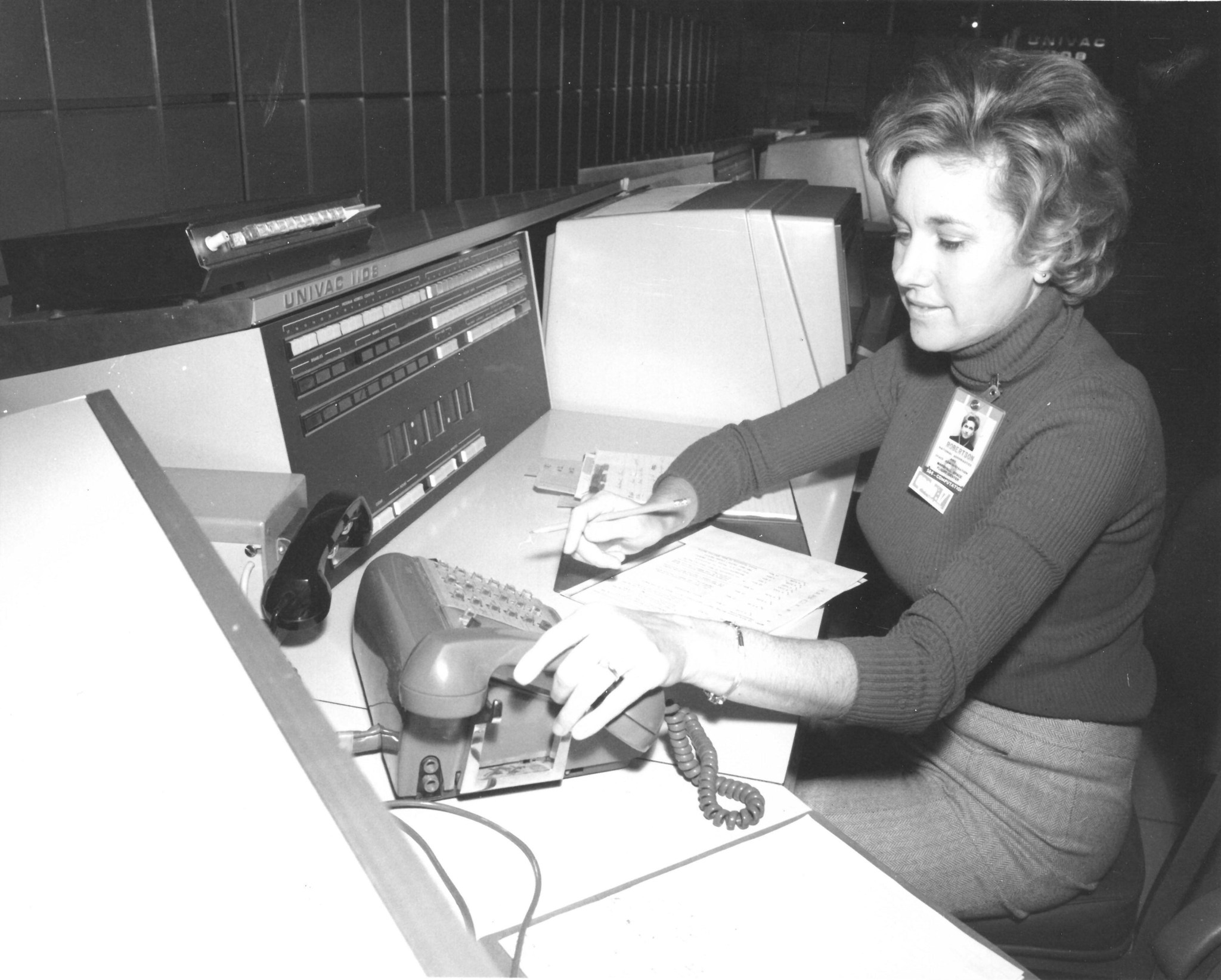
Billie S. Robertson was born in Jasper, Alabama and graduated with a degree in Education (mathematics) from what is now the University of North Alabama in Florence, Alabama. Originally intending to become a math teacher, Robertson initially took a job with the Rohm and Haas Company at Redstone Arsenal in 1951 calculating the thrust of rocket engines. In 1952, she accepted a position with the Army and the Wernher von Braun rocket team, working directly with Dr. Rudolf Hoelker. It was Hoelker, a Peenemünde veteran and eventual head of the astrodynamics and guidance theory division in the Marshall Aero-Astrodynamics Laboratory, who taught Robertson about measuring launch trajectories. Robertson also worked with Dr. Helmut Hoelzer, another original rocket team member who later became director of the Computation Laboratory at Marshall.
Over the course of her career, Robertson worked with classified materials related to the ICBM program, with guidance and control computer software for the Jupiter C program (which launched the first US satellite, Explorer I, into space), running simulations and computer programming in the Computation Laboratory where she eventually worked her way up to becoming a member of Computation Lab director Hoelzer’s staff. After the 1960 transfer of the Army Ballistic Missile Agency team to NASA, Robertson developed the manual for computer models related to launches during the Apollo, Skylab, and Apollo Soyuz Test Project (ASTP) programs.
During the ASTP program, Robertson served as the coordinator for all support requirements from the Computer Services Office related to ASTP launch Information Exchange Facility/Huntsville Operations Support Center (HOSC) activities. She was named ASTP “Employee of the Month” in May 1975 for her work developing the Computer Services Office Plan for the ASTP, a plan which defined the responsibilities of the HOSC during ASTP and was effective for all major pre-launch tests and checkout, launch, flight, operations and post-flight data reduction.” For this work, NASA awarded Robertson with a trip to see the launch of ASTP from the Cape.
Robertson spent much of her career visiting schools where she spoke to young women about professional opportunities in the aerospace industry. By the end of her career, Robertson oversaw the activities of support contractor personnel engaged in analysis, development, and maintenance of mathematical models for digital computers; duties which required her to define, coordinate, and provide technical direction in the studies of trajectory systems, orbit determination, and mission planning activities. Robertson retired from Marshall in 1979.

























